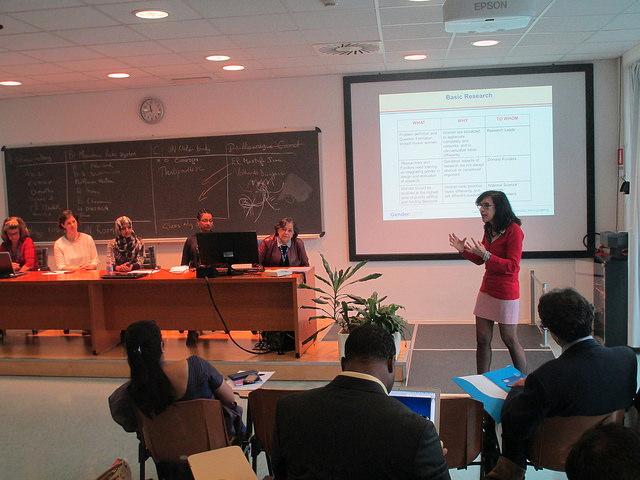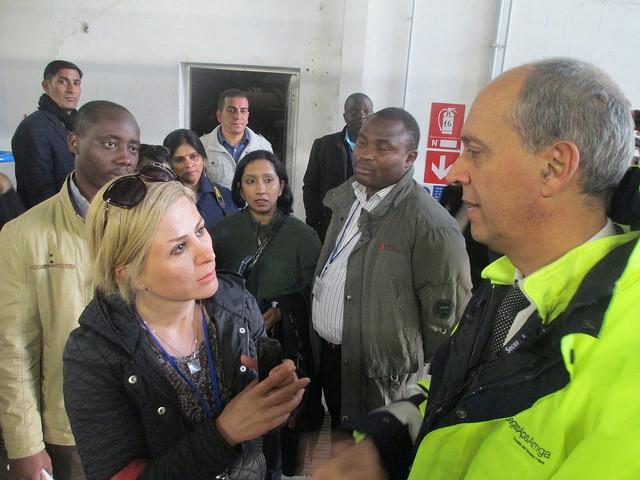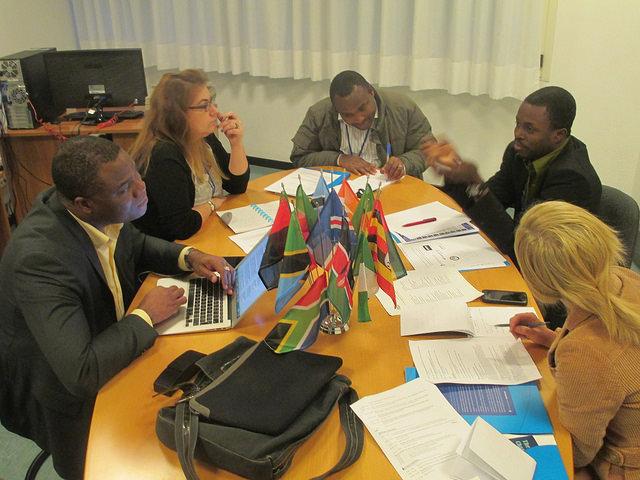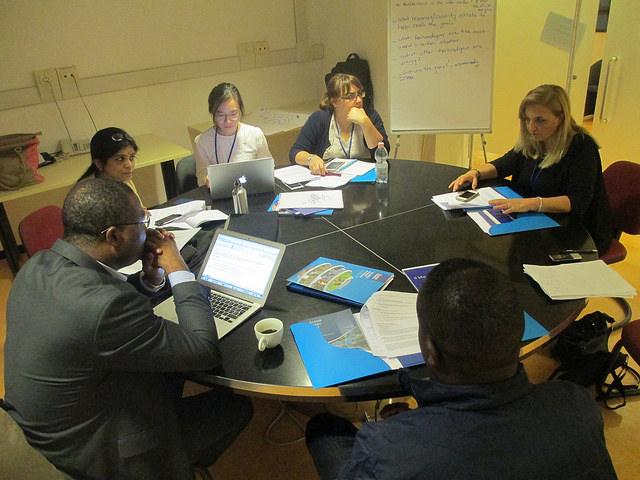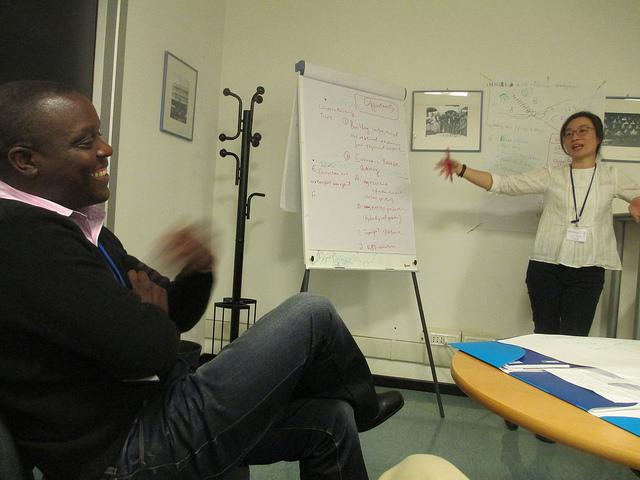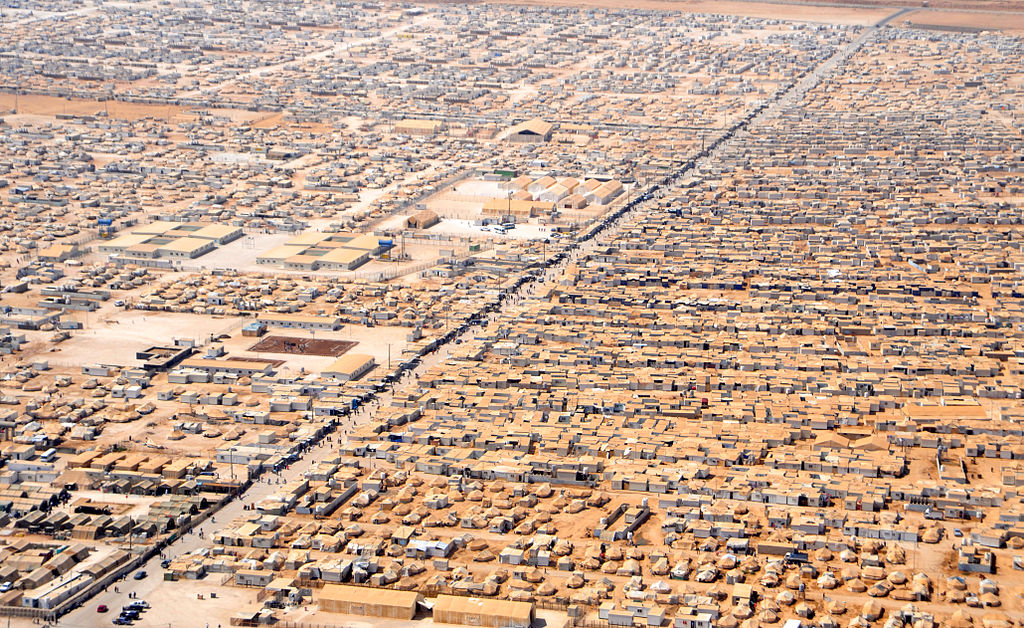
Many developing nations struggle to supply clean water to their citizens, but few are under as much pressure from water scarcity as the Middle Eastern country of Jordan. And as refugees flee into Jordan to escape conflicts in Syria and neighborhing nations, the problem has only gotten more dire.
How dire? Jordan contains about 10 million people, and about 90% of its land is desert. It has few fresh water sources. Since Syria’s violent distablization began in 2011, Jordan’s government estimates that it has taken in roughly 1.4 million refugees. So Jordan's ability to supply drinkable water to its citizens has seen an upheaval, said civil engineer Maysoon Al-Zoubi, of the Arab Dar for Engineers in Jordan.
“With climate change we are also already expecting the situation will be worse,” said Al-Zoubi. “Now, with the refugees, we are not good, because the water that we have already is only enough for 3 million people.”
At a recent TWAS workshop, Al-Zoubi’s home country was a powerful example of how international issues shape water policy – and the work of scientists and engineers. She was one of several speakers at the TWAS Science Diplomacy Workshop on Sustainable Water Management, which took place from 30 November to 4 December 2015 at the Academy’s headquarters in Trieste, Italy. Researchers, engineers and policymakers from all over the globe heard lectures on how science and diplomacy could solve water resource issues that stretch across borders.
The 42 attendees, who hailed from 19 countries, also participated in exercises that explored the treaties and technologies needed to resolve international tensions over water sources. During the course of the week they discussed hypothetical policy problems in which science plays a key role, such as the effects of climate change and pollution on shared sources of drinking water. GenderInSITE, a policy organisation associated with TWAS, also made a presentation on the importance of gender to water issues. (Find a full collection of presentations from the event here.)
The event received financial support by the Swedish International Development Cooperation Agency (Sida), and the Italian wastewater treatment companies iMR E&T s.r.l. and AcegasApsAmga. It was part of a larger programme that has made TWAS a hub for events focused on the relationship between science and diplomacy. Peter McGrath and Sara Dalafi from the TWAS Science Policy/Science Diplomacy programme organized the event.
A case study in water crisis
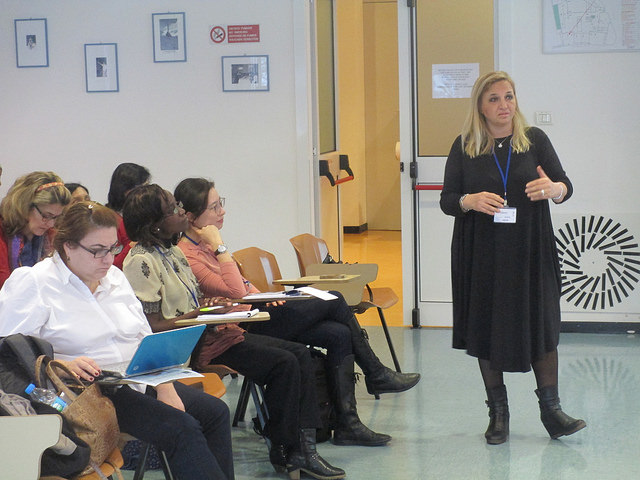 Al-Zoubi’s lecture served to summarize the importance of cooperation among researchers and policymakers who must deal with water shortages, sometimes amid rapidly developing crises. The Syrian crisis in particular is proving to be profoundly difficult for the region, and is changing the entire face of how water management in Jordan works.
Al-Zoubi’s lecture served to summarize the importance of cooperation among researchers and policymakers who must deal with water shortages, sometimes amid rapidly developing crises. The Syrian crisis in particular is proving to be profoundly difficult for the region, and is changing the entire face of how water management in Jordan works.
For example, many refugee camps in Jordan are near the northern border with Syria, the same location where much of Jordan's groundwater is. One example is the Zaatari Refugee Camp which is currently home to almost 80,000 refugees. Water from this campsite’s groundwater would normally go to the Jordanian citizenry, but the new population not only depletes the water quickly but could cause permanent damage to the aquifer itself.
Meanwhile, the Jordan River used to provide 1.3 billion cubic meters of fresh water every year to the Dead Sea. Now it provides closer to 60 million due to use of the water for irrigation, she said, losing over 90% of its flowing water. The water level of the Dead Sea is dropping a metre each year. “Even the Jordan River itself has been transformed to little more than an open channel of agricultural runoff – diverted slime waters and untreated sewage,” said Al-Zoubi. “In some places, the Jordan River is almost dry. No water in it.”
The conflict has brought at least one unexpected water advantage: The Yarmouk River, which runs between Syria and Jordan, had been practically dry for years because Syrian farmers siphoned off most of the flow for irrigation, al-Zoubi said. But the unrest has decimated Syrian farming in the region, and now water is flowing again. Even so, the extra water is nowhere near enough to compensate.
Now, with few other options left, Jordan has started to desalinate water from the Red Sea, which is not only expensive, but requires pipelines to transfer the water from the south to the north where most of the population lives.
“The refugees consume the less-expensive water, which is the groundwater and surface water,” said al-Zoubi, leaving the next generation of Jordanians with the expensive desalinated water.
She said hospitality between Arab nations is important, which is why Jordan is willing to host so many refugees. But it’s important for other nations to keep in mind the countries hosting massive numbers of refugees as they buckle under the pressure from the rapid population growth. Jordan can turn to treaties to buy water across the border with its neighbors, such as Israel, but it’s a temporary and incomplete way to address the problem at best. Researchers and policymakers need to collaborate on how they can help one another, she said.
“It’s best to work together to manage these resources, rather than continue to think this is my share or this is your share,” al-Zoubi said. “Jordan and Syrian relations have experienced some political tensions, but of course this should not jeopardize effective water management in both countries. It’s important to focus on mutual benefit.”
Find a full album of photos from the workshop at the TWAS Flickr page.
Water knows no borders
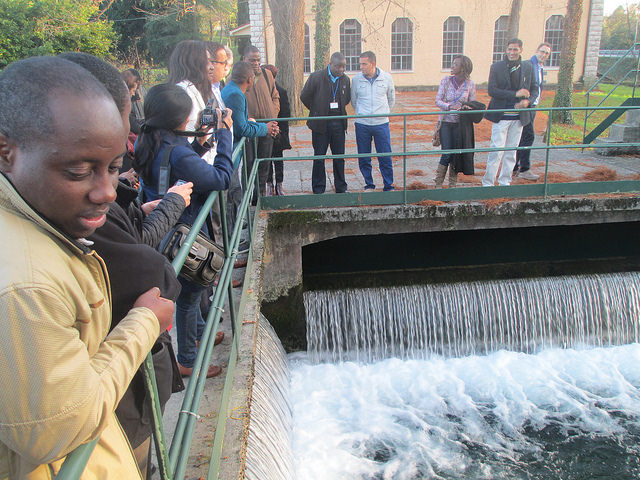 Over the course of the week, the policymakers and scientists explored problems such as how nations can collaborate to adapt as climate change reduces the usable water from mountain snows and glaciers, how three countries might form an agreement to manage pollution and water supply in a shared river basin, and how to set up a United Nations body to help countries modernize water and sanitation management.
Over the course of the week, the policymakers and scientists explored problems such as how nations can collaborate to adapt as climate change reduces the usable water from mountain snows and glaciers, how three countries might form an agreement to manage pollution and water supply in a shared river basin, and how to set up a United Nations body to help countries modernize water and sanitation management.
The workshop is relevant to some water issues emerging in southern Africa right now, said hydrogeologist Modreck Gomo of Zimbabwe, currently a researcher at the Institute for Groundwater Studies in South Africa. He said cross-boundary groundwater sources haven’t yet been fully addressed by governments in the region, except for USD10.2 put into a million water management institute and trust fund that will try to allocate water from border-crossing aquifers, as well as advance groundwater research and infrastructure.
Gomo said workshops such as this help researchers understand how to communicate with policymakers. “How do you negotiate, to speak to convince, especially when dealing with people?” he said. “There are different people of different countries and with different priorities at this workshop. You can also learn from their experiences."
The workshop helped participants look at water problems regionally instead of nationally, so that groups with varied interests could determine how to use resources to benefit everyone, said workshop participant Hubert Onibon, the head of water and sanitation for UNICEF in Cameroon. Onibon’s group focused on the multinational agreement to manage pollution and water supplies, entering a long debate about how the agreement would divvy up funds between nations to address the problem.
“This offered an opportunity really to learn more about water and what colleagues are doing in other countries, to share experiences and also to see how we could shift from scientific results to policy and decision-making,” Onibon said.
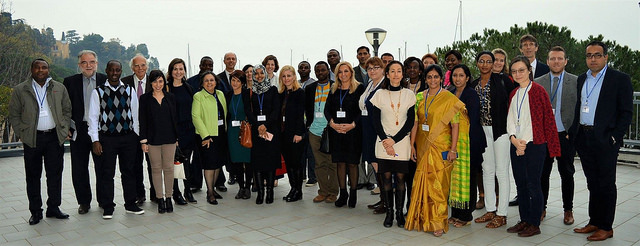 For the first time at a TWAS science diplomacy event, a parallel workshop was run by GenderInSITE – an international initiative focused on including womens’ perspectives in science, innovation, technology and engineering. GenderInSITE Acting Director Alice Abreu introduced gender issues to the workshop on the first day, and seven GenderInSITE participants ended the workshop with a panel discussion. Their key message: Women should be a part of the discussion on resolving water issues because, throughout the developing world, women collect the drinking water for most communities.
For the first time at a TWAS science diplomacy event, a parallel workshop was run by GenderInSITE – an international initiative focused on including womens’ perspectives in science, innovation, technology and engineering. GenderInSITE Acting Director Alice Abreu introduced gender issues to the workshop on the first day, and seven GenderInSITE participants ended the workshop with a panel discussion. Their key message: Women should be a part of the discussion on resolving water issues because, throughout the developing world, women collect the drinking water for most communities.
“We’re here as GenderInSITE, bringing out the perspective that women are part of solving the problem,” said GenderInSITE participant and physicist Marcia Barbosa of Universidade Federal do Rio Grande do Sul in Brazil. “They also bring the perspective that the problem affects men and women in slightly different ways.”
See a video by GenderInSITE on the workshop and water issues relate to gender.
Science should be a part of any public policy, said environment and water researcher Vijaya Lakshmi Thatiparthi of Jawaharlal Nehru Technological University Hyderabad in India. In making policy, Thatiparthi said, interests inevitably will collide, especially across borders, so scientists need to understand how to face the tensions that arise. And as scientists deal with issues relevant to human needs, they must be able to understand the interests of the people affected by their work.
“On a grassroots level, you design the policies,” she said. “If you have a bottom-up approach, you will understand the scenario and the needs on the grassroots, local level.”
Sean Treacy


